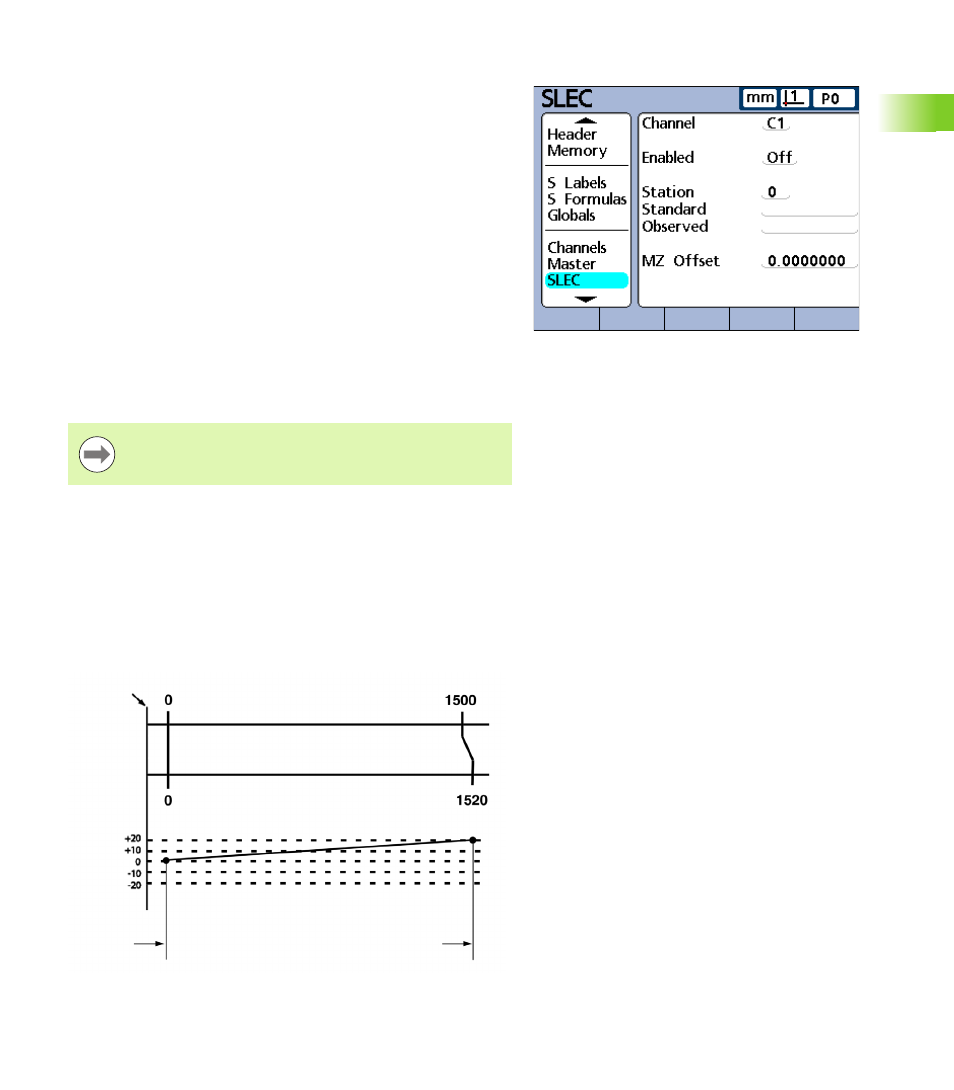Slec setup screen, Slec or lec, which is right for my application, Lec (linear error correction) – HEIDENHAIN ND 2100G User Manual
Page 115: 3 s o ft wa re s e tu p

ND 2100G GAGE-CHEK
115
2
.3
S
o
ft
wa
re
s
e
tu
p
SLEC setup screen
The SLEC setup screen contains fields for configuring and enabling
segmented linear error correction (SLEC), or linear error correction
(LEC) for each input channel.
SLEC or LEC, which is right for my application?
Any channel input device can include slight nonlinearities over its
measurement range. LEC compensates for nonlinearities by applying
a single linear correction coefficient to the entire range of
measurement. SLEC compensates for nonlinearities by applying
multiple correction coefficients to individual nonlinear segments
within the measurement range.
LEC is easy to set up, but does not provide correction for local
nonlinearities that could be present over only small portions of the
measurement range. SLEC correction requires a greater investment of
time to set up, but results in more accurate measurements.
If an overall nonlinearity exists without significant local errors, LEC can
be applied as a correction method. However, if input devices are found
to have significant local nonlinearities, SLEC should be applied as a
correction method.
LEC (Linear error correction)
The LEC correction coefficient is created by the ND 2100G system
using data provided by the user in the SLEC setup screen. The LEC
setup data provided by the user consists of nominal and measured
values of a standard at the two extreme ends of the entire
measurement range.
This diagram below shows nominal (standard) values and measured
(observed) values of a standard and shows that a small overall error
exists across the entire measurement range.
SLEC setup screen.
SLEC and LEC require a repeatable machine zero.
Nominal (Standard)
Measured (Observed)
Machine 0,0
(Reference)
Deviation
Station 0
Station 1